Many people know the name William Wallace. In the clip below, Mel Gibson plays him in the film Braveheart (1995), and it is just one of many examples of how the name William Wallace lives on to this present day.
His story is one of a man who had his life and his freedom taken from him, and who would stop at nothing to get it back, and this relentless pursuit of freedom and independence in the face of oppression is what has helped turn Sir William Wallace into one of the most famous characters in all of history.
But what do we really know about William? Who was he? When did he live? When and how did he die? And what kind of man he was?
Curious students of history would love to know all the answers to these questions, but the truth is that much of his life remains shrouded in mystery.
There are so few historical reliable sources that most of our knowledge is a mere collection of loose facts, myth, and imagination. However, that doesn’t mean we are completely ignorant, and it doesn’t mean he is any less interesting. So, we’re going to dive into what we do know about this legendary man to see if the myths around him can be counted as truth.
William Wallace in Braveheart
For those who haven’t seen it, the film Braveheart chronicles what we know about the man. The scene below comes towards the end of his life, and we have no way of knowing if he ever gave this speech.
But it’s interpretations such as these that have helped entrench William Wallace into our collective memories. It’s our job as historians to try and figure out if what we believe about this man is truth or mere legend.
The Life of William Wallace
To understand the story of Sir William Wallace, we must take a look at the political climate of Scotland in 1286. King Alexander III of Scotland had three children at the time, two sons and one daughter, but by 1286, all three were dead.
His only daughter, Margaret, had given birth to just one other daughter, also named Margaret, and then died shortly thereafter. This daughter, although being just three-years-old, was recognized as Queen of Scots, but she died in 1290 while traveling from her father’s home in Norway back to Scotland, leaving the Scots without a monarch.
Naturally, many different members of the nobility stepped forward to proclaim their right to the throne, and tensions rose as each man jockeyed for control; Scotland was on the brink of Civil War.
To stop this, the King of England at the time, Edward the I, stepped in after being requested to arbitrate by the Scottish nobility. He was to choose who would take over the throne, but Edward had a condition: he wanted to be recognized the Lord Paramount of Scotland, to which they agreed.
The most credible claims were John Balliol and Robert Bruce, grandfather of future king. A court decided who would be the rightful heir to the throne and by 1292 John Balliol was selected to be the next King of Scotland.
Yet Edward had very little interest in allowing the Scots to live free. He levied taxes upon them, which they accepted well enough, but he also demanded that the Scots give military service in the war effort against France.
The response to Edward’s demand was a renouncement of paying homage to the King of England by the Scots and an attempt to secure an alliance with France to wage war against the English.
Upon learning about such a decision, King Edward I of England moved his forces into Scotland and sacked the city of Berwick, seizing control of it and demanding that King John Balliol surrender the rest of his territories. The Scots fought back at the Battle of Dunbar and were utterly crushed.
John Balliol abdicated the throne, earning him the nickname of “empty coat.” It was this point that the English occupation of Scotland became a reality and the nation was more or less conquered by King Edward.
This created tension within Scotland but with their king’s leadership failing to inspire a great fight against the British and the occupation of their lands, there was not much that they could do without a leader. It would seem that as long as the English stood strong, they would ultimately be subjugated by King Edward.
The Rise of William Wallace: Assassination at Lanark
This is where the story of Sir William Wallace begins. No one knows about his background, where he grew up or what the start of his life had been like. However, there are speculation that he was first cousin to Roger de Kirkpatrick. Roger himself was a third cousin to Robert the Bruce.
The poet known as Blind Harry chronicled much of William Wallace’s life, but Harry’s descriptions were somewhat generous and most historians now hold that the majority of things he said about William were somewhat untrue or exaggerated.
A minor noble without any real background to speak of, William Wallace came on the scene in May 1297, a year after Scotland had been invaded by the British. Wallace’s first actions at Lanark became the spark that would go on to set off the powder keg that was the political climate of Scotland.
Rebellion was nothing new to the Scottish people. In fact, even before he began to fight, there were a great many who were leading raids against the British occupations.
William’s part in these rebellions up until May 1297 was unknown. Lanark was the headquarters of the British Sherriff of Lanark William Heselrig. Heselrig was in charge of administering justice and during one of his courts, William rallied up a few soldiers and promptly killed Heselrig and all of his men.
This was the first time that he was mentioned in history, and while his action wasn’t the first act of rebellion in Scotland, it immediately launched his career as a warrior.
The reason why William assassinated this man is unknown. The myth was that Heselrig had ordered the execution of Wallace’s wife and William was looking for revenge (the plot of the move Braveheart) but we don’t have any historical evidence of such a thing.
It either happened that William Wallace coordinated with other nobles in an act of uprising, or he had chosen to act alone. But regardless, the message to the English was very clear: the War of Scottish Independence was still alive.
William Wallace Goes to War: The Battle of Stirling Bridge
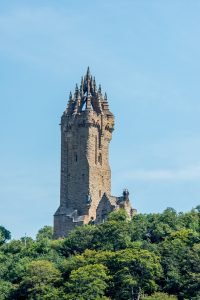
The Battle of Stirling Bridge was one of the series of conflicts of the Wars of Scottish Independence.
After Lanark, William Wallace was becoming the leader of the Scottish rebellion, and he was also gaining a reputation for brutality. He managed to build up a large enough force to lead an army against the English and after a few extensive campaigns, he and his ally, Andrew Moray, took control of Scottish lands.
With the Scottish moving quickly and retaking land, the English grew nervous about the security of their sole remaining territory in Northern Scotland, Dundee. In order to secure the city, they began to march soldiers toward Dundee. The only problem was that they would need to cross the Stirling Bridge to get there, and that was exactly where Wallace and his forces were waiting.
The English forces, led by Earl of Surrey, were in a precarious position. They would need to cross the river in order to reach their objective, but the Scottish resistance fighters on the other side would engage as soon as they crossed.
After much debate and discussion, the English made the decision to cross the Stirling Bridge, despite the fact that it would be too narrow for more than two horsemen to cross side by side.
William Wallace’s forces were smart. They didn’t attack immediately, but rather they waited until enough enemy soldiers crossed over the Stirling Bridge and would attack swiftly, moving in from the high ground with spearmen to route the cavalry.
Despite the fact that Surrey’s forces were numerically superior, Wallace’s strategy cut the first group off from the Stirling Bridge and the English forces were promptly slaughtered. Those who could escape did so by swimming in the river to get away.
This immediately killed any of Surrey’s will to fight. He lost his nerve and despite still having the main force in his control, he ordered the Stirling Bridge to be destroyed and for his forces to retreat. The idea of cavalry losing to infantry was a shocking concept and this defeat shattered the English’s confidence against the Scots, turning this battle into a major victory for Wallace and he would continue in his war campaign.
His brutality, however, still showed at this battle. Hugh Cressingham, the treasurer to the King of England, had been slain in the battle and Wallace along with the other Scots, flayed his skin and took pieces of Hugh’s flesh as a token, displaying his hatred for the British.
The Wallace Monument (above), which was constructed in 1861, is a tribute to the Battle of Stirling Bridge and a symbol of Scottish nationalist pride. The Wallace Monument was constructed following a fundraising campaign, which accompanied a resurgence of Scottish national identity in the 19th century. In addition to public subscription, it was partially funded by contributions from a number of foreign donors, including Italian national leader Giuseppe Garibaldi. The foundation stone was laid in 1861 by the Duke of Atholl in his role as Grand Master Mason of Scotland with a short speech given by Sir Archibald Alison.
The exploits of Wallace were passed on to posterity mainly in the form of tales collected and recounted by the poet Blind Harry. However, Blind Harry’s account of the Battle of Stirling Bridge is highly debatable, such as his use of exaggerated numbers for the size of the participating armies. Nevertheless, his highly dramatized and graphic account of the battle fed the imaginations of subsequent generations of Scottish schoolchildren.
The Battle of Stirling Bridge is depicted in the 1995 Mel Gibson film Braveheart, but it bears little resemblance to the real battle, there being no bridge (due mainly to the difficulty of filming around the bridge itself).
Latest Biographies
Queen Zenobia: The Charismatic Empress of Ancient Syria
Eleanor of Aquitaine: A Beautiful and Powerful Queen of France and England
Frida Kahlo Accident: How a Single Day Changed an Entire Life
Sir William Wallace
It was after this daring attack that Wallace was appointed as Guardian of Scotland by the deposed King John Balliol. Wallace’s strategies were different from the traditional viewpoint on warfare.
He utilized terrain and guerilla tactics to fight against his opponents, leading his soldiers to fight using ambush tactics and taking opportunities where he saw them. The English forces were numerically superior, but with Wallace’s tactics, it didn’t really matter when sheer force alone wouldn’t win a fight.
Eventually, Wallace was knighted for his actions. He was regarded as a hero in Scotland and his quest to expel the English occupation was seen as just and righteous by the nobles. As he conducted his campaign, the English mustered up forces and led a second invasion of Scotland.
The English Fight Back
Edward I of England’s forces were dispatched in a large number, tens of thousands of them, in the hopes of being able to draw William Wallace out for a fight. Wallace was content, however, to refuse to engage in battle, waiting until the large English army had exhausted their supplies to strike.
As the English army marched, taking back territory, their morale decreased significantly as supplies dwindled. Riots broke out within the English army and they were forced to quell them internally. The Scots were patient, waiting for the English to retreat, for that was when they intended to strike.
A crack in the plan was found, however, when King Edward discovered the hiding spot of Wallace and his forces. King Edward quickly mobilized his forces and moved them toward Falkirk, where they fought fiercely against William Wallace in what is today known as the Battle of Falkirk.
It was at the Battle of Falkirk where the tide of William’s career would turn, however, as he was unable to lead his men to victory against Edward’s forces. Rather, they were quickly overpowered by the vastly superior English bowmen.
These bowmen did an excellent job of breaking Wallace’s defenses and the English King’s superior discipline allowed for him to keep his cavalry in line until the Scottish broke into disorder. Then a charge was made and the Scots were routed. William Wallace barely escaped with his life.
The Falkirk Roll is a collection of the arms of the English bannerets and noblemen present at the Battle of Falkirk. It is the oldest known English occasional roll of arms, and contains 111 names and blazoned shields.
The Fall of William Wallace
It was this time that Wallace’s reputation as a military leader was hit hard. While they were skilled fighters, in an open battle against experienced soldiers, they didn’t have a chance.
Wallace stepped down from his role as Guardian of Scotland and decided that he would journey to France, hopefully to secure the French King’s assistance in the War for Scottish Independence.
There isn’t much else known about his time abroad other than the fact that he did meet with the French King. It has been suggested that he might have met with the Pope but there was no evidence that such a meeting ever happened.
Regardless of what his goals were in his time abroad, when Wallace returned home, he would resume his actions of aggression against the English.
The Death of William Wallace
William Wallace’s career and life would soon come to an end, however, when Sir John de Menteith, a Scottish noble, betrayed William and turned the once Guardian of Scotland over to the English.
Wallace’s life would not last much longer, for after he was captured he was quickly brought before Westminster Hall and was tried for his crimes. He was charged with treason, to which he merely replied: “I could not be a traitor to Edward I of England, for I was never his subject.” He was found guilty and, and in 1305, he was sentenced to be hanged, drawn, and quartered so as to fully punish him for his insurrection.
To say that William Wallace’s execution was horrible is an understatement. So hated was he by King Edward I that when it finally came time to order the death of the man, the punishment would be far more severe than most executions.
William Wallace was stripped naked and dragged through the streets of London by horse. He was hanged but they didn’t allow for the hanging to kill him, rather they waited until he was barely on the edge of consciousness before the cut him down.
Then, he was disemboweled, stabbed, cut, and emasculated. Then, after such torture and humiliation had been done, he was beheaded. His body was cut into several pieces and his head was stuck on a pike atop the London Bridge.
Such a type of execution says a lot about a man. To his friends, Wiliam Wallace as a hero, befitting of praise and glory. To his foes, William Wallace deserved one of the most brutal executions possible.
Explore Other Biographies
Echoes Across Cinema: The Charlie Chaplin Story
Malcolm X: Early Life, Nation of Islam, Assassination, and More
Saddam Hussein: Life, Death, and Legacy
Seward’s Folly: How the US bought Alaska
The Right Arm of Custer: Colonel James H. Kidd
Beer Hall Putsch: Causes, Outcomes, and Hitler’s Rise to Power
William Wallace and Freedom
His execution was a nightmarish affair, but his legacy in the fight for Scottish freedom would forever live on in their history. The war for Scottish Independence raged on for quite some time after that, but even the fierce fighting Wallace had taught his people, they never were able to achieve the same success. Ultimately, the Scottish would never be truly free, something that they had fought so hard to protect.
However, that William Wallace was willing to go to such lengths to win his independence has earned him hero status in our collective psyche. He has become a symbol of freedom to people all around the world, and he lives on as the epitome of a true freedom fighter.
So, while he may have lost, and while we may never know, know his true motivations and intentions, William’s legacy as a fierce fighter, loyal leader, valiant warrior, and ardent defender of freedom live on to this day.
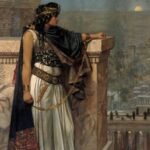
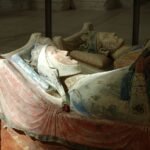


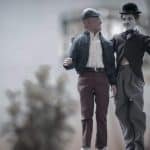
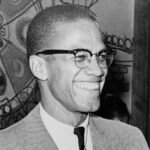
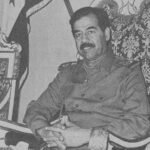
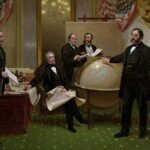
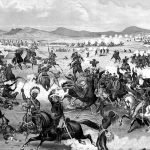
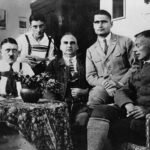
Bannockburn!
Thank you for this wonderful account
very interesting and thorough account of Wallace’s campaign for Scottish independence.
Scotland achieved independence in 1314, at the battle of bannockburn led by Robert the Bruce. He was named king shortly after, King Robert the first.
1306 not 1314,my bad.
Why was there reference to the British, should this not have been the English ?
Aren’t they one in the same?
Hero of heros
Most is true but the are some vital facts missing. You can find more if you dig deep. But there is alot on the internet that is rubbish to. I have studied wallace for years GOD BLESS WALLACE FOR EVER AND EVER. just think ig the english dint get him scotland would of been even greater.
I would be interested in any facts you have about me Uncle…
Just because you have same last name doesn’t make him ur uncle numb nuts.
He’s my Uncle too. My Father is from Refrew Shire and our unbroken history in the clans territory can be traced back to the 1200’s
I think Wallace sounds like an amazing freedom fighter and Edward sounds like a huge pompous royal ars
He deserved to die the way he did, dirty Scottish paedophile like the rest of you. Hopefully Nicola Sturgeon is next.
Watching Braveheart made me read this information, and thought it enthralling…..
What a person William Wallace was…..
How is that execution more horrible than was common? It was extremely common. It was the bog-standard for treason. Lots of people died this way.
England agreed to the 1328 Treaty of Edinburgh-Northampton which recognized Scotland’s independence and Robert the Bruce’s claim to the throne.
Are the English not a’holes anyway? You really only have to look at history to decide that.
Oh, for Pete’s sake, Melissa!
Perhaps the same spirit of rebellion can serve in politics of today. Brexit for example.
Or the independence of Alberta and Saskatchewan from Eastern Canada. The concept of Confederation is a lie, slavery of the West to a centralized Eastern government. William Wallace had the spirit, character and backbone to fight for Scotish Independence. The same lives on today.
Alberta Strong!